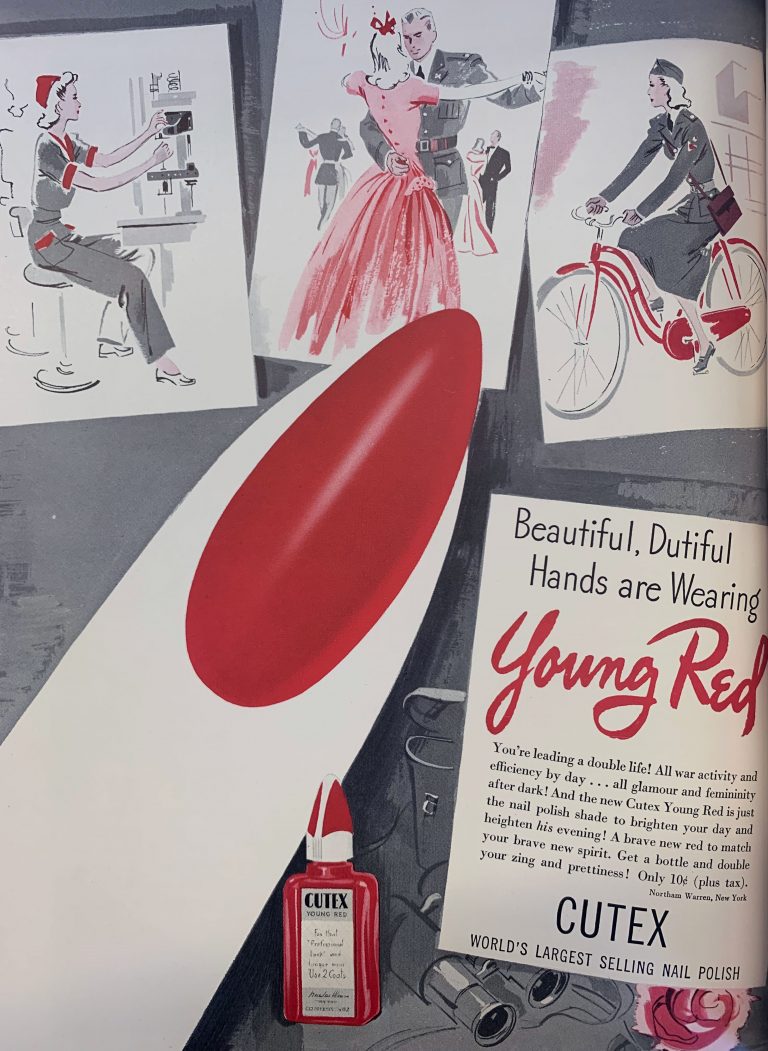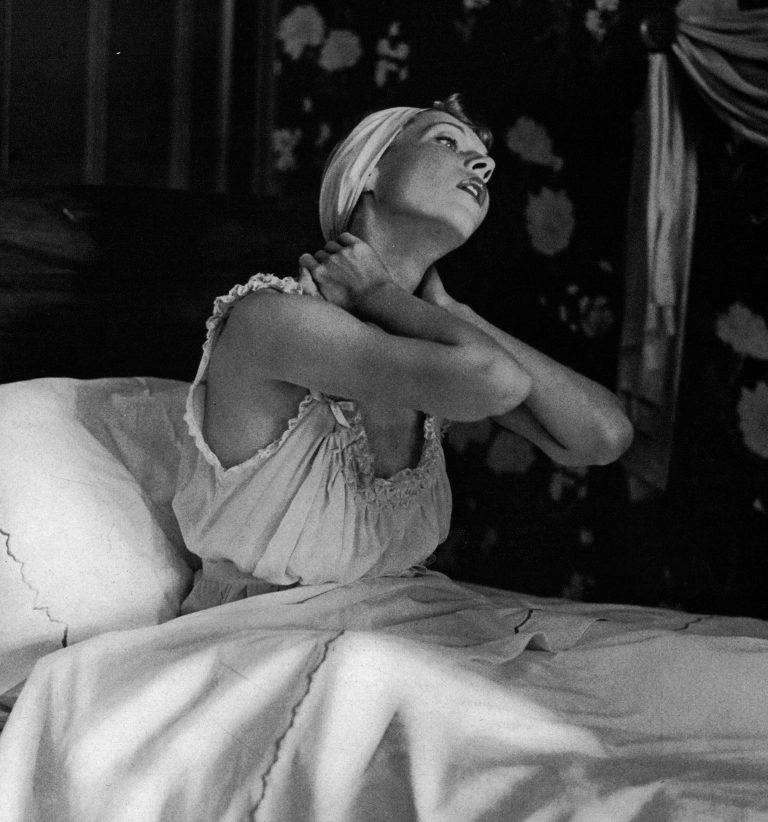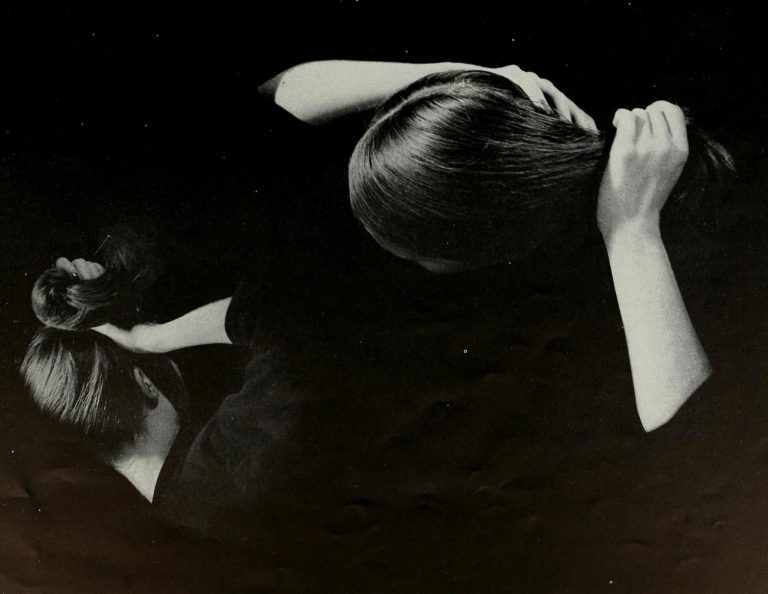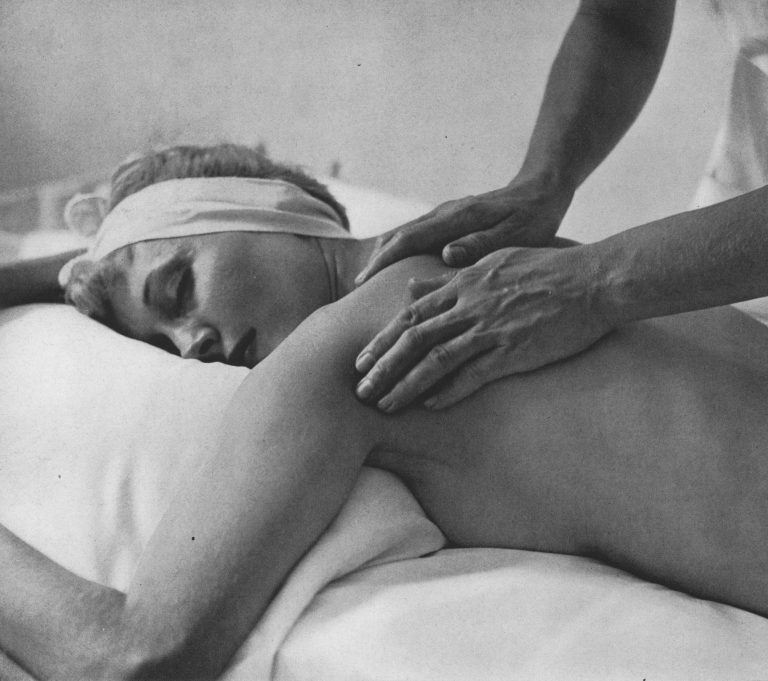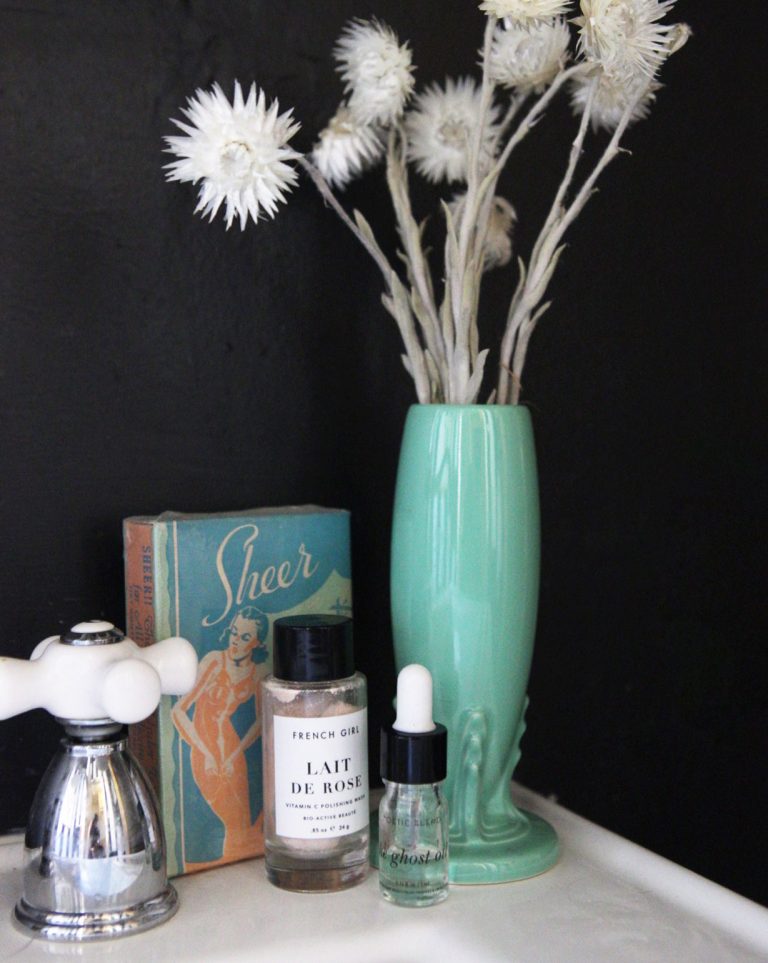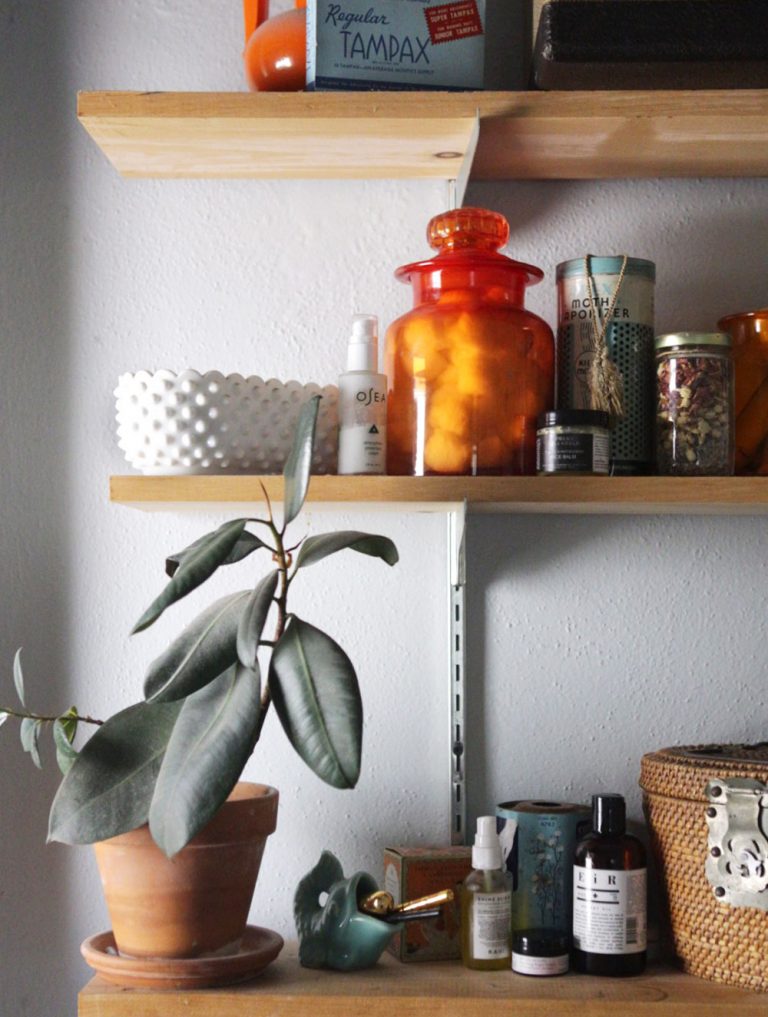6 Times Self-Care in the 1940s was Way Ahead of Its Time
Self-care is one of those terms that’s been enjoying a moment for the last few years, probably related to the traumas of modern life. Meditation, masks, manicures, massages—putting an emphasis on our own personal wellbeing can help us feel a sense of control on the inside when we might feel helpless looking outward. As I go through my own self-care routines, I wondered how new this phenomenon was, and if women in wartime and the years following experienced a similar trend.
Well, yes and no. Self-care as we mean it today encompasses a wide rage of actions and attitudes designed to improve personal wellness, one subset of that being beauty routines — and there was no shortage of beauty advice for women in the 1940s. We’re probably all familiar with the concept during World War II of Beauty as Duty, encouraging women to invest in their appearance to boost morale during wartime. The campaign provided a comforting sense of normalcy in unpredictable circumstances that they had no control over, and helped to reinforce gender norms that were potentially shaken by women going to work. But perhaps most importantly, by giving women permission to care for themselves and their appearance, the campaign sought to remove the internal conflict that I know a lot of us feel today: how is it responsible to think about ourselves when there are so many people suffering and dying?
Beauty as Duty removed this conflict from consideration by reframing the question into an imperative. In a move that would not be super popular today, Beauty as Duty explicitly focused on women’s beauty for the benefit of men. “We want the men to feel we’re worth fighting for, and the best incentive we could give them is to look as though we’re worth their brave efforts,” wrote Antoinette Donnelly, whose piece “It’s Every Woman’s Wartime Duty to be Lovely” was published in various newspapers in the Spring of 1942. This sentiment was widespread and is appalling nearly 80 years later, so I was pleasantly surprised to find a few nuggets of wisdom in self-care articles from the war years and those following. In no particular order, here are my favorite postwar tips for self care and beauty.
1. Get enough sleep
I feel like I can’t read anything on health and wellness these days without being lectured on the importance of sleep, and so too it was in Vogue, Ladies Home Journal, and more. “You can’t be beautiful without sleep,” agrees Edna Charlton in The Californian in October of 1947. “Not spinach, nor milk nor bottled vitamins can make you beautiful if you look wide-eyed at your ceiling through most of the night hours.” Charlton recommends a warm bath before bed, sleeping in cool, completely quiet and dark room, and if you can’t seem to relax, she and Vogue both recommend a body scan, consciously tensing and relaxing every part of your body from your toes to your forehead (if you make it that far before falling asleep).
My rating: 9/10. These tips helped me fall asleep more easily than I had been before, but just the act of prioritizing sleep at all seemed to have a positive impact. Minus one point because I can’t tell if it’s made me any prettier.
2. Wash your hair less often
Most hair care tips I found from the 1940s instructed women to shampoo about once a week and to use dry shampoo between washes. Many recommended oil as well. “Before you retire, give your hair a thorough soaking in oil,” wrote Lu Moran for The Californian in July of 1946. “Massage your scalp with your fingertips… easily, gently, so the circulation will begin to course more freely.” Ladies’ Home Journal echoed this in January of 1948, advising to “massage oil (with sturdy fingers) into your scalp, then use a creamy softener for the ends before each shampoo.”
My rating: 8/10. While the ends of my hair are still coarse and broken (I wear a messy bun every day which is a no-no), most of my hair feels brighter, softer and is visibly shinier than before I started doing this, and it’s actually enabled me to go longer between washes.
3. Meditate for ten minutes when you get home from work
This is a tip that came from Sharon Terrill, a woman who might today be called a “wellness expert”. Much of her advice was geared toward well-being first and beauty as a secondary goal that followed naturally. “The secret of looking your best is still the secret of feeling your best,” she wrote in 1947. “And the secret of feeling your best, as revealed unanimously by experts, is accomplished by relaxing. When you arrive home from work… fix yourself a place to lie down, face-up, full length, so that your head is at least ten inches lower than your feet... Ten minutes a day like this in a semi-darkened, quiet room, is considered by some worth two hours’ sleep.”
My rating: 9/10. While I wouldn’t consider it worth two hours’ sleep, doing this helped me separate my workday from the tasks I needed to accomplish once I got home, and put me in a better mood to tackle evening chores.
4. Get regular massages
Another pro tip from our friend Sharon Terrill, in a different piece on the importance of good circulation for overall health. “Treatment by massage relaxes the nervous system, eases contracted flesh and lymphatic congestion.” Meditation and massage are also great at helping you manage stress, which is another thing Terrill wants you to do. “Almost any kind of worry … domestic, financial, emotional or career… can tie you up in knots. And unsightly bulges,” she writes. “And while some find the achievement of beautiful slimness an end in itself, there are more to whom the zestful well-being of a happy nervous system brings even greater rewards.”
My rating: 10/10. When I can afford it, I try to get a professional massage at least once a month and it feels like having a new body. On a regular basis, I try to start my day with dry brushing and foam rolling for in-between maintenance.
5. Use a jade roller
Just kidding! They didn’t have jade rollers in the 1940s. Although basic skin care advice hasn’t really changed all that much in the last century, most beauty articles I read advised consistent facial massage as a part of the skin care routine. “Ten minutes of massage every day (we mean every day) will do great things toward combating the tiny surface lines around your eyes, mouth, throat, the thickening in the lower cheek and along the jaw. And the increase of skin-circulation will force pores to constrict, making them appear much smaller,” asserts Vogue, August 15, 1946.
My rating: none! Because I didn’t do this. I can barely convince myself to wash my face every night (I KNOW) so ten minutes of massaging it every day as part of that routine just didn’t happen. If I can somehow muster up the wherewithal to start, I’ll report back.
6. Educate yourself
There were other bits of wisdom I found while perusing newspapers and magazines, like “don’t compare yourself to others” and “get fitted for a bra by a professional.” But perhaps the best bit of self care advice came from Bette Davis in the May 1947 issue of The Californian, who encouraged women to stay educated and engaged after the war. “We must learn to think… As individuals we must become aware of what is going on in the world. We must look beyond the headlines of the newspapers. We must read, not only one columnist’s opinion, but several… not only one book, but many. We must become informed.”
My rating: 12/10. The best look is one that invests in self-improvement, not just on the outside. It’s a scary time and sometimes for our own mental health we need to take a break from the news, but in small doses (like listening to The Daily podcast from The New York Times) it becomes more manageable and the insight you get from gaining a deeper understanding of issues can actually alleviate stress. And that’s the best self care of all.
My Cruelty-Free Beauty Picks for Self-Care
- OSEA Malibu Atmosphere Protection Cream
- Little Barn Apothecary Blue Yarrow + Geranium Cleansing Oil
- Zabana Essentials Tamanu Calendula Healing Balm
- Kalos After Hours Soothing Night Cream
- Kani Botanicals Shine Elixir Nourishing Hair Oil
- French Girl Lait de Rose Vitamin C Polishing Wash
- Meow Meow Tweet Grapefruit Deodorant Cream
- Eir NYC Sunset Oil


